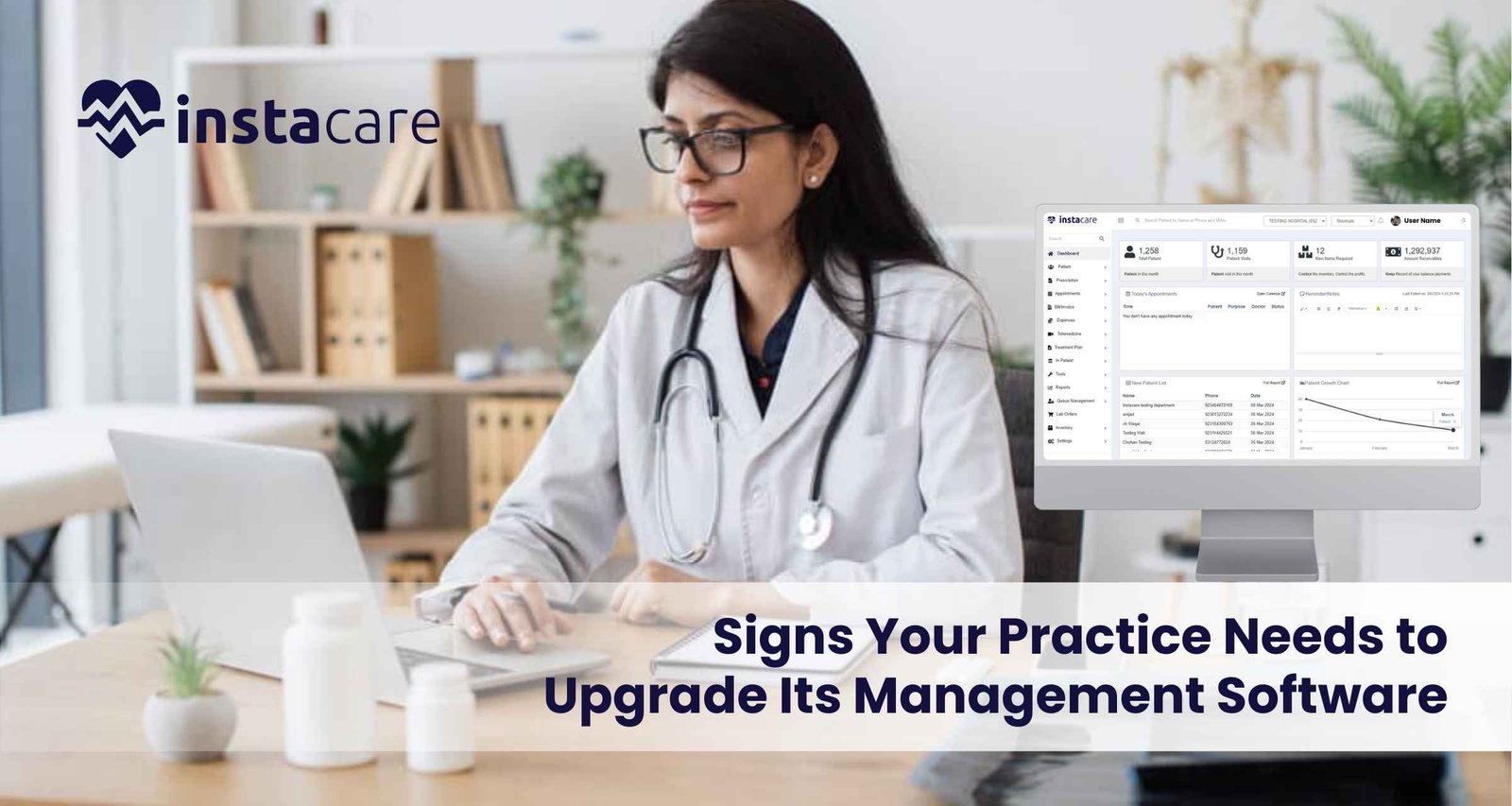Last updated on Tuesday, 31, December, 2024
With the fast pace of modern health care today, proper management software can make any health practice thrive. The tools given allow practices to streamline things, enhance patient care, and improve regulatory compliance. Unfortunately, however, your old management software may not remain good enough for your constantly developing and growing practice. Five indications it is time to move on from the old software into a new one; there follows some practical advice on how to best do that.
Table of Contents
1- Inefficiencies and Workflow Bottlenecks
Identifying Inefficiencies
Probably, the most indicative sign that upgrading management software is in place is when inefficiencies are manifested along with workflow bottlenecks. If, for example, your employees are taking too much time on activities such as setting appointments, managing patient files, or making bills, it’s probably time for an upgrade.
Effects on Patient Care
The longer the time patients take to access care, the unhappier they will be; there is also a chance of danger of safety due to a lack of accessible information, which can provide crucial details. Advanced software systems will automatically allow automation of routine tasks, enabling staff to spend more time with the patient instead of the paper.
Solutions
- Assessment: an appropriate assessment of the existing workflow that indicates where things need improvement.
- Automation: Seek a software that provides automation in scheduling, billing, and reminders.
- Integration: Select a system that has the potential to integrate with other applications the practice uses, for example, electronic health records and billing.
2- No Reporting and Analytics
The Role of Data
Given current market environment and focusing on data – driven approach, it is essential to gain access to reporting and analytics tools. If your current management software does not have built-in reporting tools, it can imply that your practice is missing out on important information in such categories as demographics of patients or the state of your practice’s finances or its efficiency.
Poor data visibility leads to:
It would become very challenging to determine trends, predict future needs or make improvements without the capability to analyze data. This can adversely affect the growth of your practice and also impact the adaptability of your practice to changes in regulatory healthcare and market conditions.
Solutions
Determine the Reporting Needs of Your Practice: Determine if your practice needs financial reports, patient flow metrics, compliance reports, and other summary reports.
- Select Advanced Analytics Tools: Select software that allows real-time analytics and custom reporting.
- Training: Make sure your staff is trained to use these reporting tools to make better decisions.
3- Complexity in Managing Patient Engagement
Patient-Centric Care
The current environment of the healthcare sector can be said to be customer centre especially as it pertains to the patients. Lack of elements of communication with the provider, appointment reminder, or an online patient portal in your management software will make the practice struggle to meet patient expectations.
The Need for Innovative Engagement Solutions
- Patients today are demanding easy access to health information, make appointments online, and acquire insight into their care in due time. Satisfaction, healthier outcomes, and loyalty could be delivered by a system that encourages patient engagement.
- Patient Portals: Choose a software that offers a patient portal as an easy way of viewing the records, communicating with the staff, and also scheduling appointments.
- Automated Reminders: Choose a system that will automatically send reminder appointments for medication refills and follow-up visits
Feedback Mechanisms: Allows patients to give you real-time experience feedback so that you’ll know where things went wrong.
4- Compliance Challenges and Security Concerns
Regulatory compliance
Healthcare regulations, such as HIPAA in the United States, require practices to carry out strict standards on handling patient data security and its privacy. If your management software does not support it, your practice will also be exposed to some extreme risks, including hefty fines and reputational damage.
Security Risks
Outdated software may also leave your practice vulnerable to security risks. Cyber security threats are increasing daily, and having a system that cannot adequately protect sensitive patient information is very serious.
Solutions
- Assess Compliance Features: Make sure any new software you look at meets all the applicable regulatory requirements and includes data encryption, access controls, and audit trails.
- Regular Updates: Select a provider that offers periodic updates and support to help cope up with emerging security threats.
- Training: Train your employees on best practices and requirements for data security compliance that can help minimize potential risk.
5- Very Poor Scalability and Flexibility
Preparation to scale
As your business grows, your management software grows with you. In the moment when you actually realize that it is neither scalable nor customized, most probably you’d not quickly respond to whatever changes happened in the quantity of the patients, kind of provision of services or needs of operation.
Necessity to Scale
An unyielding system can frustrate the staff and even prevent you from offering new workflows or services that will benefit your patients. An advanced system should allow the customization of needs for your practice and patients.
Solutions
- Scalable Solutions: You want to have software that is built to grow with your practice. This means it should be easy to add users, locations, and services with little to no disruption.
- Customization Options: Select a system that can be customized in terms of workflows, templates, and user interfaces according to the specific needs of your practice.
- Vendor Support: The software vendor must provide strong support and resources for customization and scalability.
Conclusion
Upgrading management software is an important step toward efficient and successful practice. Knowing that it’s time for change through inefficiencies, lack of reporting, hard time to engage the patients, challenges with compliance, and inability to scale further provides the leeway for finding a better solution that addresses your needs better.
Investment in modern management software does not only streamline your operations but also enhances patient care and satisfaction. When viewing potential upgrades, be on the lookout for features and benefits that align with your objectives for your practice and for your patients’ needs.
FAQs
How do I know whether my current software is outdated?
Look for slow performance, high frequency of downtime, missing customer support, and integration issues with new technologies. If your software does not have basic reporting features or patient engagement tools, it is high time to opt for a better one.
What new management software should I emphasize?
Features that are valued in this regard include efficiency-enhancing features, like automation, reporting, analytics, patient engagement, support for compliance, and scalable options. The product has to be easy in usage for the staff, as well as the patient.
How would you ensure smooth transition with new software?
Ensure smooth transition by engaging your workforce, training adequately, and keeping implementation clear. The phased roll-outs of phases as a solution can minimize the disruption on its way. Consider doing that and taking continuous feed and making changes throughout as a process.
It does no harm in upgrading management software before your practice experiences potential collapse.



